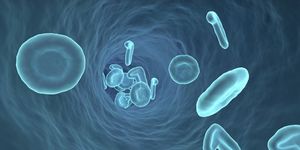NASA Webb Identifies Thin Atmosphere on Rocky Exoplanet
NASA recently used its James Webb Space Telescope (JWST) to identify a thin atmosphere on TRAPPIST-1 c, which is a rocky exoplanet approximately 40 light-years from Earth. These findings were recently published in Nature and hold the potential to help scientists better understand rocky exoplanets and their atmospheres.
Artist rendition of TRAPPIST-1 c based on this study. (Credit: NASA, ESA, CSA, Joseph Olmsted (STScI))
“We want to know if rocky planets have atmospheres or not,” said Sebastian Zieba, who is a PhD student at the Max Planck Institute for Astronomy in Germany and lead author of the study. “In the past, we could only really study planets with thick, hydrogen-rich atmospheres. With Webb we can finally start to search for atmospheres dominated by oxygen, nitrogen, and carbon dioxide.”
For the study, the researchers used JWST’s Mid-Infrared Instrument (MIRI) to observe the emission spectra and the secondary eclipse of TRAPPIST-1 c, which is when the planet passes behind its parent star. The findings suggest that TRAPPIST-1 c possesses a dayside brightness temperature of approximately 224 degrees Fahrenheit and wavelengths of 15 microns, which helps determine the atmospheric composition of the planet. The researchers note how this same method was used to observe TRAPPIST-1 b in a previous study.
Credit: NASA, ESA, CSA, Joseph Olmsted (STScI)
Credit: NASA, ESA, CSA, Joseph Olmsted (STScI)
“Our results are consistent with the planet being a bare rock with no atmosphere, or the planet having a really thin CO2 atmosphere (thinner than on Earth or even Mars) with no clouds,” said Zieba. “If the planet had a thick CO2 atmosphere, we would have observed a really shallow secondary eclipse, or none at all. This is because the CO2 would be absorbing all of the 15-micron light, so we wouldn’t detect any coming from the planet.”
As noted, the TRAPPIST-1 system is located approximately 40 light-years from Earth and possesses seven Earth-sized planets, three of which have been determined to reside within the star’s habitable zone, and several past studies suggest all the planets possess terrestrial (rocky) surfaces to some extent.
For the next steps, the researchers plan to conduct follow-up observations on the full orbits for TRAPPIST-1 b and c to help paint a clearer picture of their atmospheric compositions.
Do TRAPPIST-1 b and c contain suitable atmospheres for life, and what new discoveries will scientists make about the TRAPPIST-1 system in the coming years and decades? Only time will tell, and this is why we science!
Sources: NASA, Nature, NASA (1), NASA (2), NASA (3), Wikipedia, NASA (4), JWST Proposal 3077
As always, keep doing science & keep looking up!











